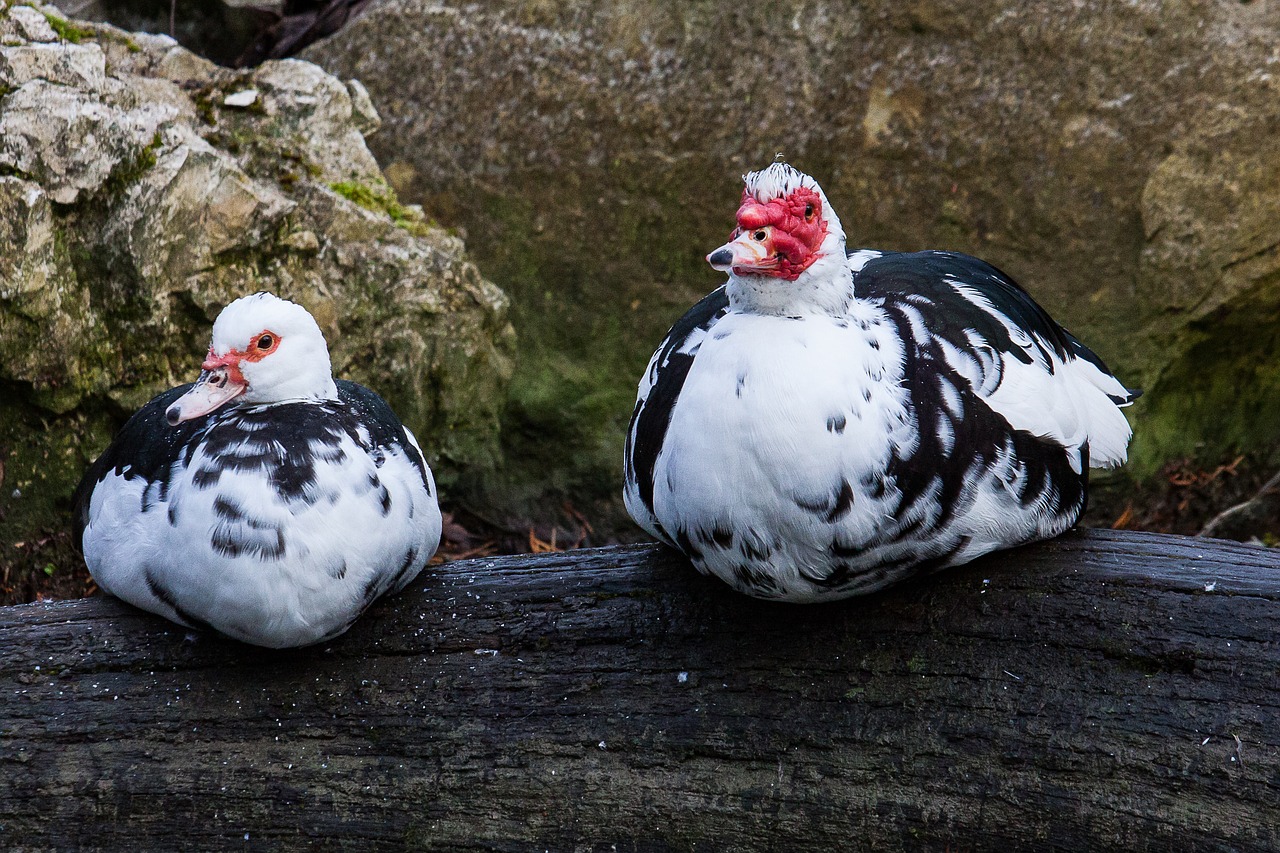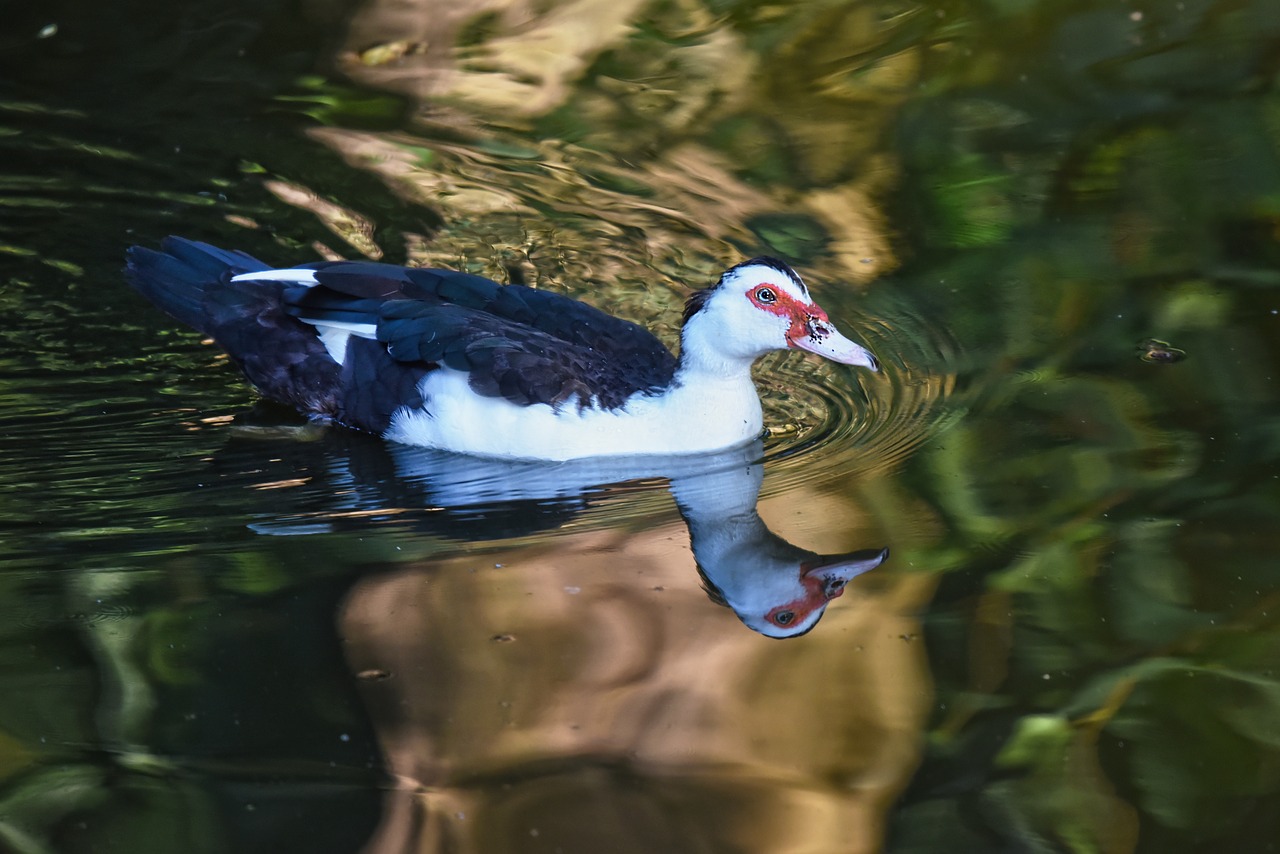Muscovy Ducks
We believe in humanely retrieving and relocating wildlife, call now for Affordable Wildlife Removal in Orlando.
Muscovy Ducks Near Your Property
When someone usually thinks of nuisance birds, the first species that come to mind are pigeons and geese. Ducks are generally not high on the list, unless they are Muscovy ducks. Muscovy ducks were originally a food animal and are native to South America and Texas, but thrive in Florida. Muscovy ducks are easily characterized by the irregular, red skin on their face. Because this bird is found in places outside of its home state, it is considered invasive. Invasive animals like the Muscovy duck take over habitats and can stress the natural ecosystems and even eradicate native plants and animals. Muscovy ducks are the largest duck species, they have no vocal cords and do not quack but rather hiss.

What Is A Muscovy Duck?
Muscovy ducks, native to tropical climates, can nevertheless adapt to colder temperatures. To improve the aesthetic value of public parks and lakes, they were purposely introduced as a non-native species in parts of the United States. They are one of the oldest fowl species in the world and it’s believed “muscovy’ refers to the Muscovy Company that transported these ducks.
Although Muscovy ducks seem to be capable of peaceful coexistence with indigenous species, scientists worry about interbreeding because it is uncertain whether inter-species mating offspring would be able to adapt, withstand and endure disease.
Muscovy ducks may help humans, aside from looking pretty, because they feed on annoying and harmful insects, such as termites. In Florida, Muscovy ducks have taken over many parks and ponds. 1Trusted Source Florida Fish And Wildlife Conservation Commission Go To Source
What Do The Muscovy Ducks Look Like?

Muscovy Ducks are big long-necked heavy-bodied ducks that can make them look like tiny geese. They have a fairly long bill that slopes up to the forehead smoothly and have a pretty long tail. Males are larger than females; Muscovy ducks that are domesticated are also larger than wild ducks.2Source The Cornell Lab Go To SourceThe Muscovy is a big duck and can have a wingspan of up to 64 inches. It is likewise a heavy type and can weigh as much as 15lbs; although the women are slightly lighter at 6-7lbs.
As the males are so heavy they can struggle to fly, but the females are able leaflets and you will require to clip their wings to prevent them leaving.
It has a broad, long body (males around 30 inches) and a wide, flat tail. Colors are generally black and white but there can be lots of variations: blue, black, chocolate, pied (white with any color), green, white, lavender, bronze, disallowed and rippled. 3Source The Happy Chicken Coop Go To Source
What Color Are Muscovy Ducks?

Wild Muscovy Ducks are black for the most part. There are broad white patches on the wings of adult males; juveniles show much smaller white wing patches. The black feathers will show a greenish gloss in good light. Domesticated and feral Muscovy Ducks may have large white spots, variable white to brown patches.
The initial color of the Muscovy is glossy blackish/brown and white, and the majority of them still are that color – with varying degrees of white, black or brown (“pieds”). Some of them are really light colored (mainly white), while others are mostly black/brown. The black/ dark brown patches have an appealing iridescence to them that can just be seen in the ideal light conditions.
Numerous other quite exotic colors have taken place – primarily in domesticated types, such as blue, blue and white, chocolate, chocolate and white, lavender and calico.
Dark colored muscovies have brown eyes. Whites, lilacs and blues generally have grey eyes.4Source Beauty Of Birds Go To Source
What Do They Eat?
Like the majority of ducks, this species eats a mixture of plants and little animals. They typically search for food in the water or near the water’s edge. A few of the plants they consume include lawn, seeds, roots, and marine vegetation.
They also hunt for small bugs, spiders, shrimp, worms, snails, fish, and lizards. Birds in metropolitan locations like parks and golf courses likewise consume a range of other foods, normally things humans leave behind or deliberately feed them.5Source Animal Network Go To Source
How Do Muscovy Ducks Reproduce?
The Muscovy lays 60-120 large white eggs each year (low for ducks).
Males reach sexual maturity in 29 weeks and the female in 28 weeks. The mating season of the Muscovy can last from August to May. This can vary by climate and the females can have 3 to four broods annually as long as she has adequate protein in her diet plan.
There actually isn’t any courtship routine except for lots of tail wagging and putting up the head crest. Males have actually been understood to eliminate each other for mating chances with the females.
They are polygamous although a male might help with protecting the nest and ducklings.
The female Muscovy will set her nest in a big cavity in a tree or in a suitably secure ready-made nest box off the ground or an elevated duck house; they do not like ground sitting duck houses.6Source The Happy Chicken Coop Go To Source
Habitat

Muscovy ducks are agile and rapid birds. They are non-migratory and are active throughout the day; during the night birds typically roost in trees.
Days are spent feeding by grazing on the ground or meddling shallow water. Muscovy ducks are social birds; they are typically seen in sets or small groups.
They are aggressive ducks; males typically fight over food, area or mates. The females battle with each other less often. Some adults will even peck at the ducklings if they are eating at the very same food source.
In order to communicate with each other, Muscovy ducks wag their tails, raise and lower their heads and utilize various vocalizations consisting of hisses and quacks. Males have a low breathy call, and females produce a peaceful trilling coo.7Source Anamalia Go To Source
Dangers Of Muscovy Ducks

Their presence in public parks can be dangerous to humans because Muscovy duck populations expand very rapidly and quickly become territorial. They will chase and attempt to bite individuals at random, which particularly endangers children, particularly as they become accustomed to being fed.
Muscovies, in addition, face many health risks. For one thing, their droppings also get into water sources and have a significant effect on results. Muscovy ducks, on the other hand, are known carriers of the avian influenza virus, which can be lethal for both ducks and humans suffering from the disease.
Trapping & Removal

Muscovy ducks will make a home in your yard, just as is the case with most aquatic birds. The problem with that is that they will ruin your yard or fill it with excrement, depending on the number of ducks. In order to repair your yard, not knowing what to do can mean a lot of expenses.
You should forget about traps when it comes to Muscovy ducks if you have no experience. The number of birds, plus their size, makes it virtually impossible to use normal traps to get rid of them. There is a need for large funnel traps that capture the entire party. Shooting them is also a bad idea, especially if you do not know the laws in your area concerning bird shooting. If you need assistance removing Muscovy Ducks from your property, contact Affordable Wildlife Removal to quickly rectify your duck problem.
Summary: Muscovy Ducks are birds native to tropical climates and are typically black with white spots. They can be found near ponds, parks, and any places that contain open grass, and food/water sources. Muscovy ducks can become aggressive and bite people even if unprovoked. Removal can be difficult to accomplish because the ducks fly in packs. Hiring a professional wildlife service will ensure the complete elimination of these ducks on your property.
